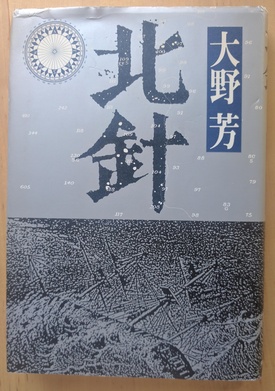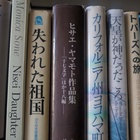In the past, some people who traveled from Japan to the United States did so without going through proper travel procedures. This is known as stowaway status.
Immigration to America, which began during the Meiji period, was restricted in 1908 when Japan refrained from issuing passports as anti-Japanese sentiment grew, especially on the West Coast, and a new Immigration Act in 1924 completely banned immigration to America.
But still, there was no end to the people who wanted to go to America. The reason for this was, above all, to earn money. But it wasn't just to make a living. They were aiming to achieve the "American Dream," to go to America and earn many times more money than they would in Japan, and make some of their dreams come true.
To achieve this, he was willing to take on the challenge even at the risk of his own life. There were three methods: one was to desert the ship he was on as a crew member overseas; the second was to sneak onto a cargo ship or other vessel on an overseas route and disembark; and the third was to cross the Pacific Ocean in a ship he had built himself and reach the American continent.
"Kitahari" is a non-fiction work that depicts the third of these cases, that is, the men who attempted to stow away across the Pacific Ocean by boat. It was published by Ushio Publishing in 1982. It was written by non-fiction writer Yoshi Ohno. This work won the special prize in the non-fiction category of the first Ushio Award.
The year is 1913 (Taisho 2). A total of 15 men set out from a small cove in the village of Mana in Nishiuwa County, Ehime Prefecture (now Yawatahama City), which is in western Shikoku, just a stone's throw from Oita Prefecture across the Bungo Channel, in a small fishing boat called a Utasebune, about 15 meters long, to cross the Pacific Ocean and head for the west coast of America.
The "north needle" is a magnetic compass, and relying on this north needle and a nautical chart, the ship with its sails set out on an adventurous voyage, regardless of the danger.
"Kitahari" is a non-fiction book written in a narrative style based on historical facts, starting with the meticulously planned stowaway plan and describing the actual voyage. According to the afterword, titled "Research Notes," the author learned about the history of stowaways on Utase-bune ships, visited the area, listened to stories from people who had heard about what happened at the time, and reconstructed the facts by consulting local history and other sources.
At the time, the country already had restrictions on immigration to America. Even if people applied, they were never granted permission. However, there was a high level of enthusiasm for immigration locally. This was because behind the ria coast were mountains and little arable land, so there was not much hope for agriculture. At the same time, this was fuelled by stories of people who had gone to America earlier and returned home with a lot of money, and stories of success in America. If you can't travel legally, the only option is to stow away. In fact, there were stories of people successfully stowing away in the area.
The three men at the center of the stowaway group were brothers Ueno Kikumatsu and Tomesaburo, and Ishida Heisuke, who had already traveled to the United States legally once, worked there for several years, saved up some money, and returned to their hometown.
In the end, 15 people, from 50-year-old Kikumatsu to those in their 20s, boarded a used boat called Tenjinmaru. They secretly planned and prepared for the trip because it was illegal, but they also didn't want to have too many people coming to join them.
Some of the members have families, some have just had babies, and some have come forward despite the concerns of their families.
Loaded with food and water, they entered the Seto Inland Sea through the Bungo Channel, stopping in Kobe to have clothes made in preparation for their arrival in America. However, as they rounded the Kii Peninsula and headed off the coast of Ise, the rudder broke down, so they stopped off at the Izu Peninsula for repairs. They expected a difficult road ahead.
Once out on the ocean, the small boat was toyed with by nature. At one point, a group of large sharks attacked the hull. They also saw a tornado that made them think that dragons existed in this world. The waves they saw during the storm that lasted for three days were "more than 50 meters, no, easily over 100 meters." The rudder was broken, part of the hull was destroyed, and a large amount of seawater flowed in. The men desperately clung to something and could only pray in fear, "Namu Konpira Daigongen..."
However, they managed to continue their voyage and finally reached land 52 days after their departure. That was in northern California. They changed into the clothes they had brought with them, got their money, and entered a town to hide. However, after just two days, they were easily captured by local vigilantes who were on the lookout for stowaways.
He was detained in an immigration detention center in San Francisco, then put on a ship across the Pacific to be deported to Japan, and so his life-threatening journey finally started all over again.
The story of the stowaways ends here, but the author touches on their lives afterwards. While some of them buried their remains in their hometowns, others continued to stow away on other ships and eventually ended up living in America. This shows how common stowaway practices were at the time.
Why did they want to go to America so badly? I happened to have a chance to visit there recently. Looking at the sea, I felt that the place looked like a gateway to a wider world, surrounded by terraced fields with little flat land and houses lined up close together. I'm sure that the stowaways of the past could not have stayed in their small place if they thought of America across the sea.
The author describes Iwata Heisuke's dissatisfied feelings after returning from America, but before he decided to stow away to America this time:
When I was working in America, all I looked forward to was earning enough money to go home as quickly as possible. Every day of hard work brought me one step closer to that joy. But now that I'm back home, all I see is the same old life I had when I left Japan.
In addition to the facts in this book, the history of American immigration, including stowaways in this area, is detailed in Yoko Murakawa's "Amerika no Kaze ga Fuita Mura: Utasebune Monogatari" (Ehime Prefectural Cultural Promotion Foundation, 1987). Murakawa also wrote about it in Discover Nikkei in October 2010 as the " Kitahari Study Group ."
(Some titles omitted)
© 2017 Ryusuke Kawai







